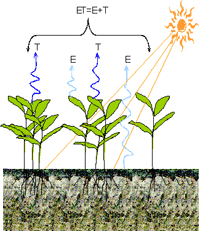Agricultural Research Division of IANR

West Central Research and Extension Center, North Platte
Date of this Version
3-2010
Citation
Journal of Soil and Water Conservation (March-April 2010) 65(2): 31A-32A
Abstract
Invasive plant species can establish in diverse environments, and, with the increase in human mobility, they are no longer restricted to isolated pockets in remote parts of the world. Cheatgrass (Bromus tectorum L.) in rangelands, purple loosestrife (Lythrum salicaria L.) in wetlands, and tamarisk (Tamarix spp.) in riparian areas are examples of invasive plant species that are common to the United States and can be found in monocultures and patches covering many thousands of hectares. Across the world, invasive plant species like water hyacinth (Eichhornia crassipes), cogon grass (Imperata cylindrica), and mile-a-minute weed (Persicaria perfoliata L.) have choked waterways, altered fire regimes, or caused the abandonment of farmland due to their dominating and persistent characteristics.
Clearly, the effects of invasive plant species have reached global scales and their related costs have been estimated in the billions of dollars (Pejchar and Mooney 2009). While the control of invasive plant species is warranted in many natural and man-made environments, these species do provide services to these ecosystems, which have yet to be quantified on a range of scales.


Comments
Copyright © 2010, Soil and Water Conservation Society. Used by permission